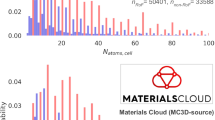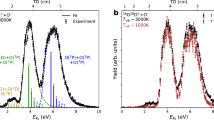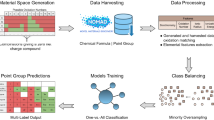Abstract
The Oxidation Number (ON) of an atom within a molecule or solid is a well defined quantity in chemistry (assuming a consistent set of rules are followed), with a long and distinguished history of usefulness. The question revisited recently [1–3] is whether it carries a predictive physical meaning in its own right beyond being an unquestionably convenient label. For example, whereas the color of compounds physically reflects the relative energetic positions of occupied vs. unoccupied, dipolecoupled energy levels, can the color be explained [4] by the oxidation state of the central ion? Can the different colors of various Mn compounds be predicted or explained in terms of their oxidation numbers [e.g. pink Mn(II) vs. black Mn(IV) vs. purple Mn(VII)], or does such understanding entail knowledge of the occupancy of the hybridized d bands, a knowledge not provided by the ON (but possibly labeled by it, once such understanding is independently acquired)? Also, the photoemission core shifts of an atom within a molecule (e.g. relative to a reference of the atom in its elemental form) physically represent the balance of all electrostatic charges in the system as felt by that atomic site. Can this balance be predicted or explained [1] by the oxidation number of the ion, or is the latter only a convenient short-hand notation (often assigned ex post facto) for an otherwise possibly nontrivial electronic structure? In other words, the central question here is whether the Oxidation Number is predictive, in its own right, or does it act functionally as a Social Security Number that conveniently labels a person, but by itself (e.g., without additional access to financial, medical, or educational records, or psychoanalysis) does not lead to understanding of the person.
Similar content being viewed by others
Article PDF
Author information
Authors and Affiliations
Rights and permissions
About this article
Cite this article
Raebiger, H., Lany, S., Resta, R. et al. Oxidation numbers as Social Security Numbers: Are they predictive or postdictive?. Nat Prec (2009). https://doi.org/10.1038/npre.2009.4012.1
Received:
Accepted:
Published:
DOI: https://doi.org/10.1038/npre.2009.4012.1



